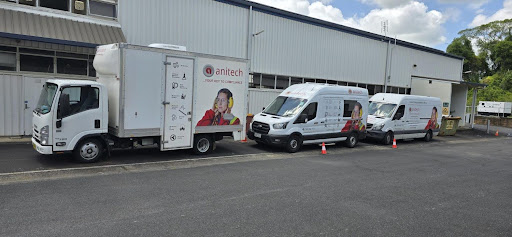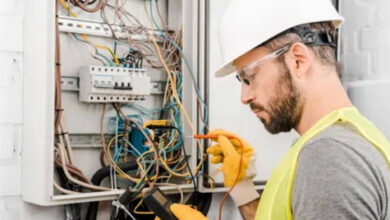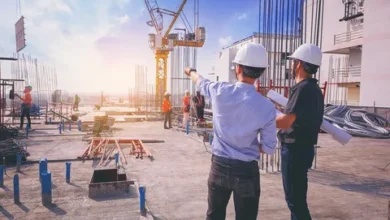Noise Assessments and Audiometric Testing: How Hearing Safety is Changing in Australia

Australian workplaces are getting noisier. Australian workplaces are getting smarter and safer too. The focus in hearing safety is now on preventative measures instead of just compliance. It is no longer just a matter of measuring insulated decibels. This transformation is mainly due to effective noise assessments and audiometric assessments. These two tools are no longer just a regulatory safe requirement in Australia but become tools to optimise productivity in a healthy work environment.
Moving On from Compliance Testing
Anitech noise assessments in Australia have, for a long time, been very basic, even uncreative. Noise isn’t linear, and noise assessments often treat it as such. This approach forgets the very temporary nature of noise, which changes with the maintenance of the machine, the behaviour of the staff, the expected outputs, and even the architecture of the building. Risk reporting, which is often the only consideration for noise assessments, is a very limiting approach.
Together, they reveal great insights into if current controls are effective, if some roles or shifts are at higher risk, and where to invest in engineering or design changes that will provide the most gain.
Hearing Protection and Data
Digital tools and technology have advanced the sophistication of noise mapping. Rather than having to rely on isolated readings, modern assessments can take advantage of real-time monitoring sensors that continuously provide information that can be used to populate compliance dashboards. These dashboards can communicate with occupational health tools or risk and compliance software so that safety teams can cross noise trends with audiometric test results.
For instance, if a certain work area consistently results in shifts to a less favorable hearing threshold, the software will flag that area as a hotspot, cross-reference it with the type of equipment, and suggest actions. This is not compliance; it is hearing management on the offensive.
This is consistent with Australian Standards such as AS/NZS 1269.1:2021 Occupational noise management – Measurement and assessment of noise emission and exposure. The key difference is the advanced technology we now have that allows real-time compliance as opposed to the after-the-fact compliance that used to be the norm.
Using audiometric testing in a comprehensive health strategy
Some professionals–particularly in industries with mandatory hearing protection–view audiometric testing as a regulatory burden. However, audiometric testing is a critical component of a comprehensive noise control strategy. It indicates whether control measures adequately protect the most critical area: the worker’s ear.
For Australian industries, especially manufacturing, logistics, construction, and healthcare, the early detection of hearing threshold shifts bears great value. When audiometric testing is coupled with recent noise exposure data, safety professionals can mitigate risks long before permanent hearing loss occurs.
More progressive organisations incorporate audiometric data with other health indicators such as ergonomics and psychosocial factors, in their WHS management systems. Protective hearing measures are considered a part of overall health and wellness. This unified approach addresses the “social” part of ESG frameworks, illustrating concern for the employee’s health beyond legal compliance.
Risk control and environmental design
In Australia, a growing trend in hearing safety is the focus on environmental design instead of personal protection. Rather than relying solely on compliance with PPE, businesses proactively influence architectural design, noise mitigation measures, and maintenance scheduling through noise assessment.
Audiometric testing is useful in determining whether the investments made are justified. If the data collected indicates that the risk of developing noise-induced hearing loss (NIHL) correlates with the lack of adequate acoustic insulation or obsolete machinery, that information is used in design and procurement.
Digital noise registers that are centralised through compliance platforms are especially useful for multi-site operations. This system facilitates the comparison of exposure profiles across different territories or organisational units, such as divisions or departments. This level of comparative assessment was not attainable with the older paper-based systems.
The Australian Advantage: Regulation Meets Innovation
The Australian regulatory framework places emphasis primarily on the the proactive management or handling of noise exposure, and the newer technology provided to businesses is a game changer. The combination of noise monitors that give real-time data and audiometric testing provides auditable evidence that not only meets, but also exceeds the expectations of Safe Work Australia.
This level of compliance is increasingly recognised as part of an organisation’s corporate social responsibility, with regulators and clients capturing this as part of corporate reputation. Contractors who provide proactive hearing protection and not merely reactive testing tend to attract attention in tenders and ESG (environmental, social, and governance) reporting.
Practical Steps for Organisations
- Digitalise your noise management – Replace noise management static reports with real-time reporting.
- Seek to Integrate – Link the audiometric and noise register data to stream the root cause analysis.
- Automate compliance tracking – Utilize risk and compliance tools to identify potential review dates, changes to thresholds, and training gaps.
- Prioritize engineering controls – Use the data from your assessments to focus on making physical changes first, instead of administrative controls.
- Engage employees consistently – Integrate hearing health into your wellbeing initiatives rather than treating it as an annual compliance obligation.
To summarize: Looking ahead, the noise assessment and audiometric testing landscape in Australia will have little to do with checklists while focusing on relationships will be fundamental. When the data from the two processes is collected into one flow, the organisation receives more than just reports, they gain an invaluable asset—foresight. In the next 10 years, successful companies will not only be compliant by meeting exposure limits, but they will also be creating soundscapes that offer protection while energizing workers, allowing them to hear their potential with absolute clarity.



